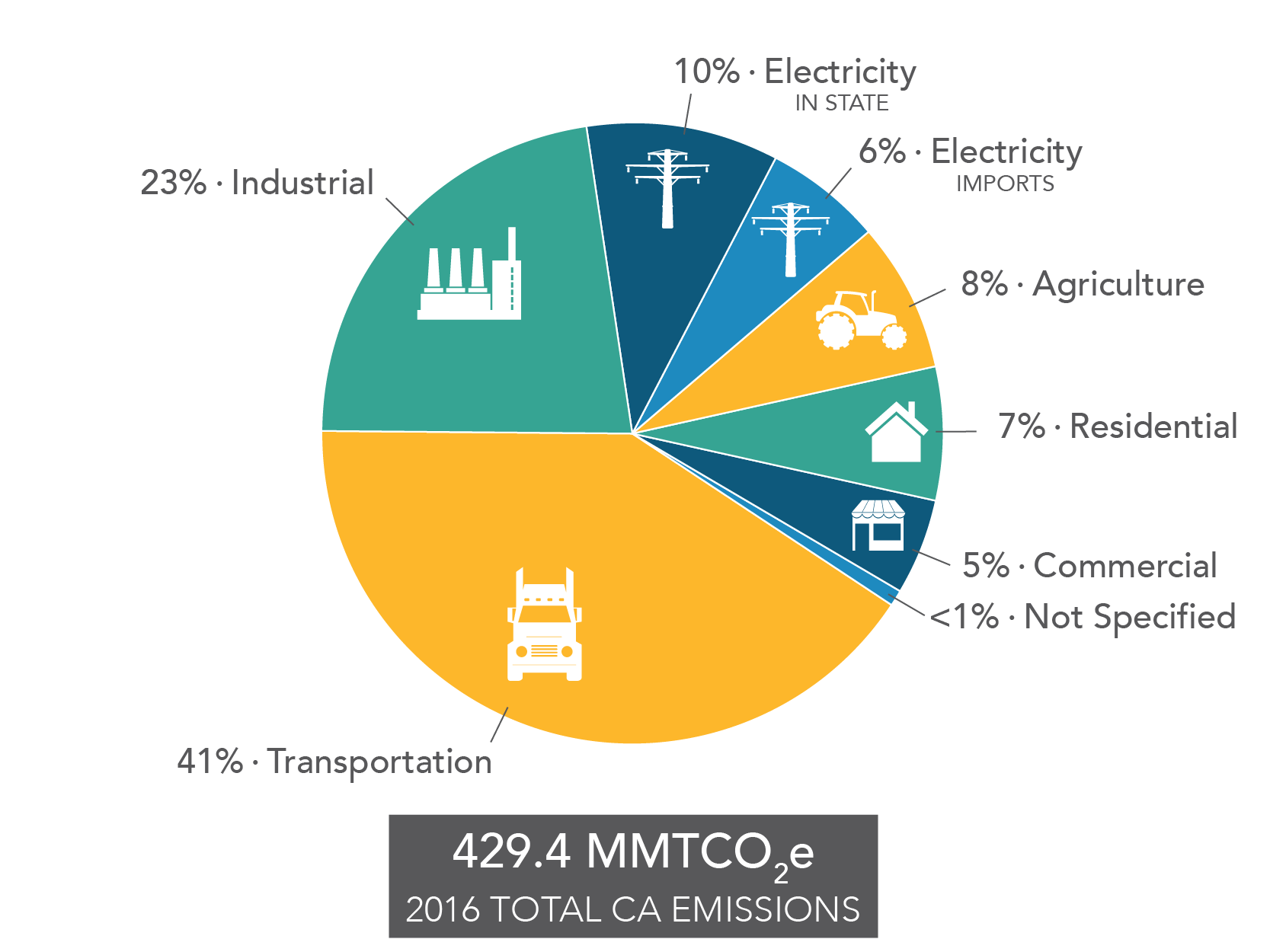“’California’s GHG emissions have followed a declining trend since 2007,’ the California Environmental Protection Agency Air Resources Board (ARB) emphasized in the Overview section of ‘California Greenhouse Gas Emissions for 2000 to 2015 – Trends of Emissions and Other Indicators,’ an adjunct or supplement to its ‘2017 Edition California GHG Emission Inventory’ document. ‘In 2015, emissions from routine emitting activities statewide were 1.5 million metric tons of CO2 equivalent (MMTCO2e) lower than 2014 levels, representing an overall decrease of 10% since peak levels in 2004. During the 2000 to 2015 period, per capita GHG emissions in California have continued to drop from a peak in 2001 of 14.0 tonnes per person to 11.3 tonnes per person in 2015, a 19% decrease. Overall trends in the inventory also demonstrate that the carbon intensity of California’s economy (the amount of carbon pollution per million dollars of gross domestic product (GDP)) is declining, representing a 33% decline since the 2001 peak, while the state’s GDP has grown 37% during this period,’” was the then current state of progress on California’s greenhouse-gas-emissions-reduction activity in “Progress report: California on track to reach 2020 GHG target of 427 MMTCO2e,” an Air Quality Matters article posted on Jan. 12th this year.
“The prospect of California reaching its 427 million metric tons of carbon dioxide equivalent emissions 2020 GHG target which, incidentally, is what California emissions output in year 1990 was, looks pretty good,” reads the second to the last paragraph in that same article.
Well, according to the latest information available, the Golden State is indeed close – really close. In that post it was brought to my attention by a commenter that the actual target is 431 MMTCO2e. And, this target, in fact, has now been surpassed.
In its “Climate Pollutants Fall Below 1990 Levels for First Time: Emissions down 13% since their 2004 peak while economy grew 26%” Jul. 11, 2018 news release, the California Environmental Protection Agency Air Resources Board (ARB) has reported: “The California Air Resources Board today announced that greenhouse gas pollution in California fell below 1990 levels for the first time since emissions peaked in 2004—an achievement roughly equal to taking 12 million cars off the road or saving 6 billion gallons of gasoline a year.
“‘California set the toughest emissions targets in the nation, tracked progress and delivered results,’ said Governor Edmund G. Brown Jr. ‘The next step is for California to cut emissions below 1990 levels by 2030 – a heroic and very ambitious goal,’” the ARB in the release continued in citing California’s chief executive.
Forty percent below levels in 1990 by that date and by levels double that (80 percent below 1990 levels) by 2050.
That’s off in the future. For now, though, there is every reason to be encouraged because the level of California’s GHG emissions is, as of 2016, 429 MMTCO2e the ARB stressed, a reduction of 3 percent or 12 million metric tons of carbon dioxide equivalent emissions compared to the level achieved in 2015.
“Electricity generation had the largest decline among the sectors. Emissions from this sector declined 18 percent in 2016, reflecting continued growth in renewable energy – such as solar, wind and geothermal – as a result of the state’s Renewables Portfolio Standard, and a corresponding drop in natural gas generation. Solar electricity in all forms, including rooftop generation, grew 33 percent, while natural gas fell more than 15 percent.
“Thanks to the carbon price signal created by the Cap-and-Trade Program that makes fossil fuel generation more expensive, cleaner out-of-state electricity is increasingly taking the place of fuels such as coal. This included more imports of hydroelectric power from outside the state, which grew by nearly 39 percent in 2016 thanks to abundant rainfall throughout the West Coast,” the ARB announced.
On the down side is transportation GHG which in 2016 grew 2 percent, all of it, according to the ARB, attributed to a rise in consumption of fuel. Transportation, at 41 percent, is the sector with the highest yearly GHG emissions generation in state. “But the state also saw cars and trucks use a record amount of biofuels – 1.5 billion gallons in all – as a result of the state’s Low Carbon Fuel Standard. These low-carbon alternative fuels, consisting mostly of biodiesel, renewable diesel, and ethanol, avoided 14 million metric tons of carbon dioxide from entering the atmosphere, compared to what would have happened if conventional fossil fuels had been used.”
Keep more good news coming, California!
For more, see the “Climate Pollutants Fall Below 1990 Levels for First Time” news release here.
Images (both): California Environmental Protection Agency Air Resources Board
– Alan Kandel



Definitely, good news if we continue on this course, and if regulators decide to pull the plug. I look forward to breathing clean air, and I’m sure my grandchildren will appreciate it also.